Composition rules can be applied to all art forms in life as they are what make up an effective images or series of moving images such as film shots. There are over a hundred different rules of composition for film making and people spend years studying them and their effects on film. Here are the most well known and necessary ones:
Different types of Shot Size
-Close Ups, are used very often in film as they allow the audience to feel intermit wi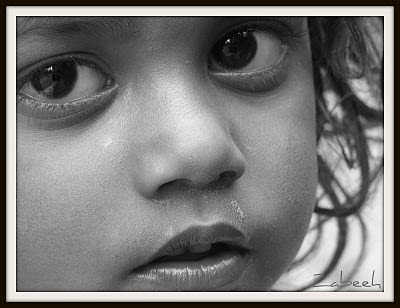 th the actors and feel involved with the scene. Close ups are used to portray emotion and detail. In music videos close ups can be used to put an emphasis on different things such as the hands playing an instrument or the eyes of the lead singer.
th the actors and feel involved with the scene. Close ups are used to portray emotion and detail. In music videos close ups can be used to put an emphasis on different things such as the hands playing an instrument or the eyes of the lead singer.
- Mid Shots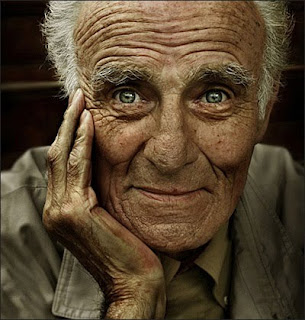 are used when the camera wants to be close to the subject but not so close that you are unable to distinguish what is in the shot. A mid shot may be used to film the face and head to portray expression.
are used when the camera wants to be close to the subject but not so close that you are unable to distinguish what is in the shot. A mid shot may be used to film the face and head to portray expression. 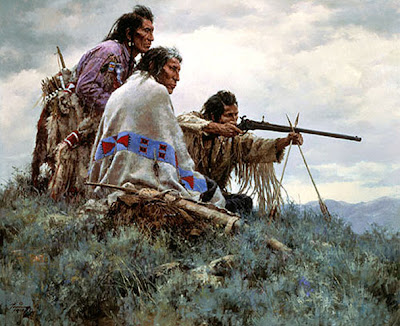
- Long Shots are used often when there is a lot of action going on, this shot enables the audience to see what is going on, if there was a fight taking place the audience would be close enough top be involved but further away enough to see the whole scene play out.
- Extreme Long Shots or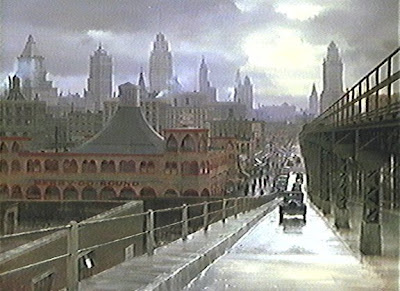 Establishing shots are used to set a time or place and to establish where a scene is, they will often give the audience a view of the surroundings to enable to show them where they are.
Establishing shots are used to set a time or place and to establish where a scene is, they will often give the audience a view of the surroundings to enable to show them where they are.
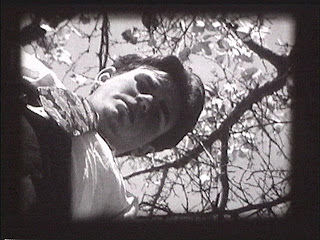
Camera Position and Angle
- Low angled shots can say a lot about a character. Shots like this let the audience know that this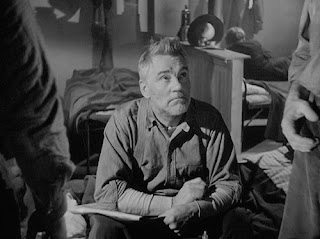 character has a higher status and that they are possibly arrogant, powerful or a ‘hero’.
character has a higher status and that they are possibly arrogant, powerful or a ‘hero’.
- High angled shots make the subject or person look inferior as we as an audience are looking down on them, it makes them seem powerless and weak.
- Flat on angled camera can make the subject look boring as there is no depth of field or shadows to the person.
Camera Movement
- Tracking shots are used all the time throughout filming, it tells the audience subco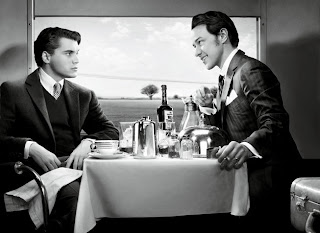 nsciously more than we realise about a character. Tracking shots that move from left to right can often let the audience know that the person who is being filmed is good, as it is natural for our eyes to read from left to right where as a tracking shot that moves from right to left can tell us that that person is bad as they have entered from the right side of the screen which is not the natural direction that our eyes look from.
nsciously more than we realise about a character. Tracking shots that move from left to right can often let the audience know that the person who is being filmed is good, as it is natural for our eyes to read from left to right where as a tracking shot that moves from right to left can tell us that that person is bad as they have entered from the right side of the screen which is not the natural direction that our eyes look from.
- Crane shots are used regularly throughout filming as they allow the audience to get a sense of space and movement in the camera. Crane shots can often be used when a camera swoops over a certain area and then moves in on the character. Crane shots can also be used as establishing shots or to create angled shots.
Lighting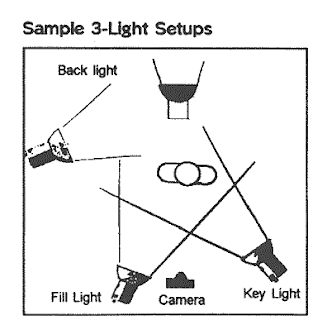
- Lighting is used to create effects or set a theme or mood in filming. It also tells us a lot about a character in a film, for example dark lighting with shadows may suggest mysterious and bad where as lots of backlighting as well as spot lighting can create a halo effect on a character and give them a very angelic look. It can completely change an emotion or a time of day in filming. There are a few essential lights that will almost always be used in filming which are a spot light, fill light and back light. These are essential at times as they enable the audience to see what is happening and who the characters are.
Different types of Shot Size
-Close Ups, are used very often in film as they allow the audience to feel intermit wi
 th the actors and feel involved with the scene. Close ups are used to portray emotion and detail. In music videos close ups can be used to put an emphasis on different things such as the hands playing an instrument or the eyes of the lead singer.
th the actors and feel involved with the scene. Close ups are used to portray emotion and detail. In music videos close ups can be used to put an emphasis on different things such as the hands playing an instrument or the eyes of the lead singer.- Mid Shots
 are used when the camera wants to be close to the subject but not so close that you are unable to distinguish what is in the shot. A mid shot may be used to film the face and head to portray expression.
are used when the camera wants to be close to the subject but not so close that you are unable to distinguish what is in the shot. A mid shot may be used to film the face and head to portray expression. 
- Long Shots are used often when there is a lot of action going on, this shot enables the audience to see what is going on, if there was a fight taking place the audience would be close enough top be involved but further away enough to see the whole scene play out.
- Extreme Long Shots or
 Establishing shots are used to set a time or place and to establish where a scene is, they will often give the audience a view of the surroundings to enable to show them where they are.
Establishing shots are used to set a time or place and to establish where a scene is, they will often give the audience a view of the surroundings to enable to show them where they are.
Camera Position and Angle
- Low angled shots can say a lot about a character. Shots like this let the audience know that this
 character has a higher status and that they are possibly arrogant, powerful or a ‘hero’.
character has a higher status and that they are possibly arrogant, powerful or a ‘hero’.- High angled shots make the subject or person look inferior as we as an audience are looking down on them, it makes them seem powerless and weak.
- Flat on angled camera can make the subject look boring as there is no depth of field or shadows to the person.
Camera Movement
- Tracking shots are used all the time throughout filming, it tells the audience subco
 nsciously more than we realise about a character. Tracking shots that move from left to right can often let the audience know that the person who is being filmed is good, as it is natural for our eyes to read from left to right where as a tracking shot that moves from right to left can tell us that that person is bad as they have entered from the right side of the screen which is not the natural direction that our eyes look from.
nsciously more than we realise about a character. Tracking shots that move from left to right can often let the audience know that the person who is being filmed is good, as it is natural for our eyes to read from left to right where as a tracking shot that moves from right to left can tell us that that person is bad as they have entered from the right side of the screen which is not the natural direction that our eyes look from.- Crane shots are used regularly throughout filming as they allow the audience to get a sense of space and movement in the camera. Crane shots can often be used when a camera swoops over a certain area and then moves in on the character. Crane shots can also be used as establishing shots or to create angled shots.
Lighting

- Lighting is used to create effects or set a theme or mood in filming. It also tells us a lot about a character in a film, for example dark lighting with shadows may suggest mysterious and bad where as lots of backlighting as well as spot lighting can create a halo effect on a character and give them a very angelic look. It can completely change an emotion or a time of day in filming. There are a few essential lights that will almost always be used in filming which are a spot light, fill light and back light. These are essential at times as they enable the audience to see what is happening and who the characters are.
Rule of Thirds
- - The rule of thirds can be applied to all forms of art, it is when an image or shot is br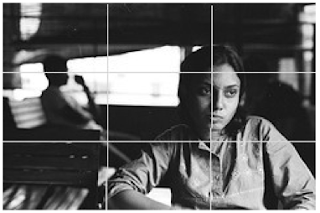 oken up into 9 parts in thirds with certain ‘hot spots’ that lead the eye around the image or shot. People may be placed on these hot spots to draw attention to them, a shot is set up so that the eye reads across the rule of thirds. If the rule is broken and a person or object is placed off one of the hot spots it will most likely be for a reason, our eye is naturally drawn to one of the hot spots so when something is placed off of one of the hot spots the audience subconsciously makes a decision about that character or person letting us know that they are rebellious, quirky or bad.
oken up into 9 parts in thirds with certain ‘hot spots’ that lead the eye around the image or shot. People may be placed on these hot spots to draw attention to them, a shot is set up so that the eye reads across the rule of thirds. If the rule is broken and a person or object is placed off one of the hot spots it will most likely be for a reason, our eye is naturally drawn to one of the hot spots so when something is placed off of one of the hot spots the audience subconsciously makes a decision about that character or person letting us know that they are rebellious, quirky or bad.
Colours
- Colours say a lot m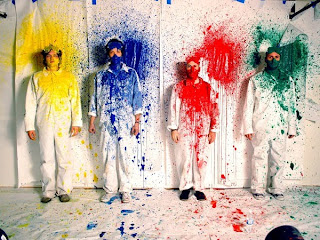 ore about a person or a set than people realise. Even the colours of lighting play a huge part in setting an atmosphere or a mood for something. Clothing can let an audience know a lot about a certain character for example the classic white clothing for good and black for evil. Yet other colours say so much more. If you wanted to portray an image of an energetic and exciting band you may dress them in reds, yellows or oranges as these colours are alert minded, outgoing, physical, active, creative, sociable with sunny or bright ideas, but if you wanted to create a band which has calming influences and is more relaxed you may use blues, purples, browns and turquoises to give off a more peaceful atmosphere with softer influences.
ore about a person or a set than people realise. Even the colours of lighting play a huge part in setting an atmosphere or a mood for something. Clothing can let an audience know a lot about a certain character for example the classic white clothing for good and black for evil. Yet other colours say so much more. If you wanted to portray an image of an energetic and exciting band you may dress them in reds, yellows or oranges as these colours are alert minded, outgoing, physical, active, creative, sociable with sunny or bright ideas, but if you wanted to create a band which has calming influences and is more relaxed you may use blues, purples, browns and turquoises to give off a more peaceful atmosphere with softer influences.
Shapes and Lines
- Shapes and lines are another thing that can say a lot about your band or the char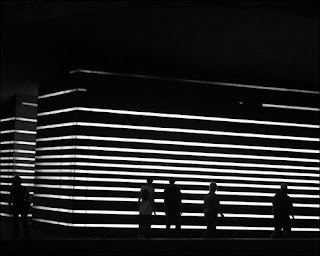 acters in your scene as they create a mood, horizontal lines are more relaxed lines where as vertical lines a harsher and more direct, diagonal lines can be used to create an atmosphere of action and movement. So if you add all of the rules and elements together such as the colours, lighting, lines and camera angles and movements you can tell the audience so much about a person or a group without saying anything.
acters in your scene as they create a mood, horizontal lines are more relaxed lines where as vertical lines a harsher and more direct, diagonal lines can be used to create an atmosphere of action and movement. So if you add all of the rules and elements together such as the colours, lighting, lines and camera angles and movements you can tell the audience so much about a person or a group without saying anything.
 oken up into 9 parts in thirds with certain ‘hot spots’ that lead the eye around the image or shot. People may be placed on these hot spots to draw attention to them, a shot is set up so that the eye reads across the rule of thirds. If the rule is broken and a person or object is placed off one of the hot spots it will most likely be for a reason, our eye is naturally drawn to one of the hot spots so when something is placed off of one of the hot spots the audience subconsciously makes a decision about that character or person letting us know that they are rebellious, quirky or bad.
oken up into 9 parts in thirds with certain ‘hot spots’ that lead the eye around the image or shot. People may be placed on these hot spots to draw attention to them, a shot is set up so that the eye reads across the rule of thirds. If the rule is broken and a person or object is placed off one of the hot spots it will most likely be for a reason, our eye is naturally drawn to one of the hot spots so when something is placed off of one of the hot spots the audience subconsciously makes a decision about that character or person letting us know that they are rebellious, quirky or bad.Colours
- Colours say a lot m
 ore about a person or a set than people realise. Even the colours of lighting play a huge part in setting an atmosphere or a mood for something. Clothing can let an audience know a lot about a certain character for example the classic white clothing for good and black for evil. Yet other colours say so much more. If you wanted to portray an image of an energetic and exciting band you may dress them in reds, yellows or oranges as these colours are alert minded, outgoing, physical, active, creative, sociable with sunny or bright ideas, but if you wanted to create a band which has calming influences and is more relaxed you may use blues, purples, browns and turquoises to give off a more peaceful atmosphere with softer influences.
ore about a person or a set than people realise. Even the colours of lighting play a huge part in setting an atmosphere or a mood for something. Clothing can let an audience know a lot about a certain character for example the classic white clothing for good and black for evil. Yet other colours say so much more. If you wanted to portray an image of an energetic and exciting band you may dress them in reds, yellows or oranges as these colours are alert minded, outgoing, physical, active, creative, sociable with sunny or bright ideas, but if you wanted to create a band which has calming influences and is more relaxed you may use blues, purples, browns and turquoises to give off a more peaceful atmosphere with softer influences.Shapes and Lines
- Shapes and lines are another thing that can say a lot about your band or the char
 acters in your scene as they create a mood, horizontal lines are more relaxed lines where as vertical lines a harsher and more direct, diagonal lines can be used to create an atmosphere of action and movement. So if you add all of the rules and elements together such as the colours, lighting, lines and camera angles and movements you can tell the audience so much about a person or a group without saying anything.
acters in your scene as they create a mood, horizontal lines are more relaxed lines where as vertical lines a harsher and more direct, diagonal lines can be used to create an atmosphere of action and movement. So if you add all of the rules and elements together such as the colours, lighting, lines and camera angles and movements you can tell the audience so much about a person or a group without saying anything.
No comments:
Post a Comment